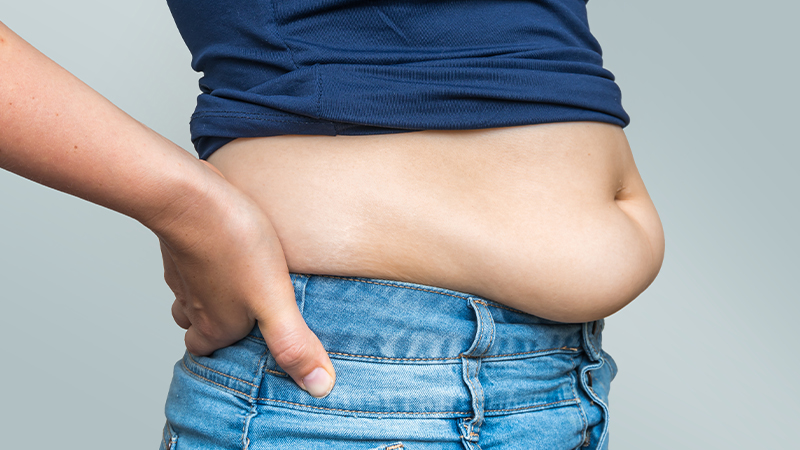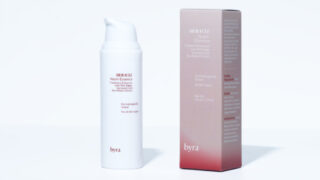A tummy tuck can make you feel better about yourself, or give you the chance to wear certain types of clothes – and perhaps see your feet again! (Okay, I may be guilty of bringing in some personal experience here…) However, for a lot of people, it can also help in dealing with diastasis recti or core muscle issues in the stomach that can cause back pain, urinary incontinence and other ailments. And, in cases where a person has a hernia, a tummy tuck surgery can become a medical tummy tuck and help with hernia repair.

Tummy tuck vs liposuction
Our core muscles are called that for a reason: they really are core to many parts of our physiology. If we’re exhausted, it shows in our core muscles. They’re often the most difficult to tone, too, as the fat around them is difficult to burn. While liposuction is an option, it can be unsafe for women who have been pregnant before, as the muscles that line the wall of the internal organs might have separated in the course of the pregnancy. This abdominal separation or gap is known as diastasis recti or recti diastasis (commonly referred to as DR or RD).
DR MARCO FARIA CORREA, one of Singapore’s leading doctors in plastic surgery, says that when women who’ve been pregnant undergo liposuction, it can cause the abdomen skin to have more irregularities and flabbiness; this makes tummy tuck surgery in the future more challenging to perform – and it can compromise the final result. For those who do present with excess skin in the abdomen, skin flabbiness or stretch marks and a bulging abdomen, or if they’ve lost massive amounts of weight, a full tummy tuck surgery – also known as abdominoplasty – is recommended.
Abdominoplasty helps to get rid of this stretched skin in the abdomen. It does this by repairing the diastasis recti caused either by an earlier pregnancy or, in some instances, by “yoyo” dieting (which can affect women and men alike). The procedure involves stretching the abdominal skin downward, and repairing the gap in two layers, from the xyphoid in the sternum down to the pubis area; the pubis area is lifted, the excess skin excised and the belly button transposed.
Techniques developed by Dr Marco
If you’re one of those who present with minimal excess skin in the lower abdomen and you have good skin tone and skin elasticity, and perhaps also a C-section scar, then the endoscopic technique developed by Dr Marco in 1991 might be the solution for you.
The technique involves using previous C-section scars or incisions as small as four to five centimetres hidden in the pubic hair area and inside the umbilical area to perform the whole procedure of stitching and repairing the rectus abdominus. This creates what you might refer to as an “inner corset” – and it’s a technique that Dr Marco has become renowned for.
In 2015, Dr Marco challenged himself to upgrade his endoscopic methods to include the use of robotics. He says that he embarked on this journey because robotic surgery is the “gold standard” of minimally invasive surgery in many surgical fields.
Today, Dr Marco uses the Da Vinci surgical system, a high-tech piece of equipment with three components: a robotic “cart” that has three to four arms to perform the procedure; a high-definition 3D vision system; and the console where he sits to operate the robotic arms. Every single moment is operated and controlled by Dr Marco; the robot system doesn’t have any autonomy to do anything on its own. And every movement is very precise.
This robotic technique is suitable for those who present with no excess skin, or minimal excess skin, or those with previous C-section scars. The incisions in this instance are around half a centimetre to 2.5cm (four incisions in total).
So when can liposuction work well for excess skin in the abdomen?
Liposuction can be an appropriate treatment for those who have a smaller amount of fat accumulation in the abdomen, with good skin elasticity and, importantly, no abdominal separation. According to Dr Marco, during liposuction, the fat is removed from the deeper layers of the skin while the superficial layer is preserved to prevent any irregularity on the surface of the skin.
Tummy tuck cost versus price of liposuction
The cost of a tummy tuck will depend on the complexity of the case, but will generally start at around $18,000; the cost of liposuction depends on how many areas you get done, but it’s generally from $8,000 onward.
One very important take-home message from Dr Marco is that plastic surgery must be done well and in a safe way; that’s why it’s important to select the right doctor who is experienced in performing tummy tucks in a safe environment; after all, this is a hospital procedure. As for liposuction, the principles are the same – and safety is again the main priority.
In short, you shouldn’t go lightly into any procedure; but if you really have tried everything and there’s no change on the horizon, do go and have a consultation.
Dr Marco Faria Correa Plastic Surgery is at Mount Elizabeth Novena Hospital, #10-26 Specialist Medical Centre, 38 Irrawaddy Road.
6464 8075 | 9176 1813 (SMS) | drmarco.sg
This article first appeared in the August 2022 edition of Expat Living. You can purchase the latest issue or subscribe, so you never miss a copy!
Don't miss out on the latest events, news and
competitions by signing up to our newsletter!
By signing up, you'll receive our weekly newsletter and offers which you can update or unsubscribe to anytime.



